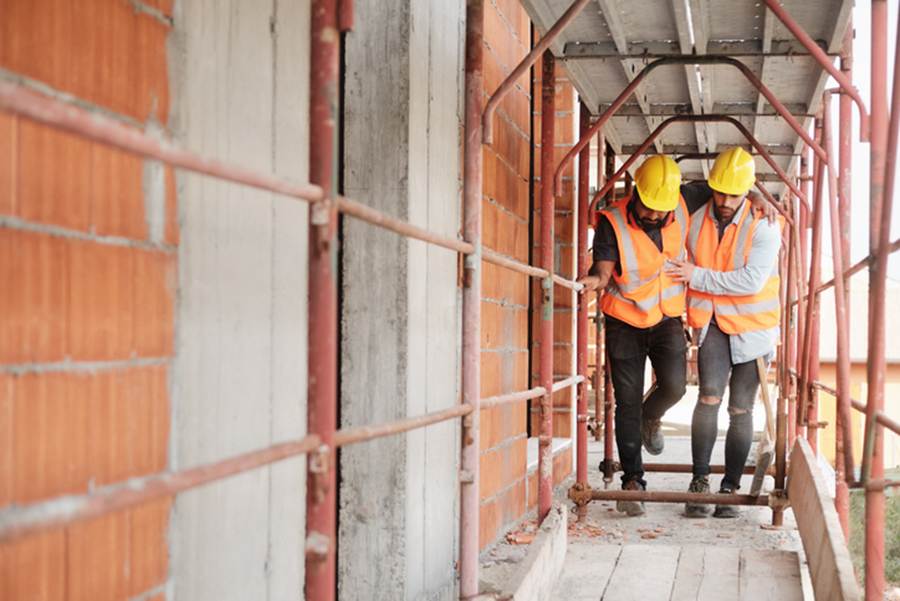
Determining Liability After a Construction Injury
Why Liability Matters After a Construction Injury
After a construction accident, everything changes fast. One moment you’re working, the next you’re dealing with injuries, lost income, and unanswered questions. If you were hurt on a New York site, it’s easy to feel overwhelmed. That’s why you need personal injury attorneys who can find answers and hold the right people accountable.
At Horn Wright, LLP, we help injured workers uncover who’s at fault and fight back when insurance companies or employers try to avoid responsibility. New York offers strong legal protections under Labor Law Sections 240 and 241, but if your accident happened in Maine, New Hampshire, or Vermont, proving liability may require a different legal approach. No matter the location, we’re here to help you move forward.

Blame Comes Fast Before You Can Even Heal
The moments after a construction injury are filled with chaos, pain, and confusion. Before you can catch your breath, someone is already working to shift the blame away from themselves and onto you.
Employers Panic First Then Push the Blame
You’ve just been hurt, and before you can process what happened, someone’s already trying to rewrite the story. Employers and insurers move fast after a construction accident, focused on protecting themselves, not helping you. They also use delays and confusion to pressure you into accepting less than you deserve. When time matters and accountability is on the line, those who created the danger rarely step up on their own.
Too Many Hands, No One Admits Fault: The Contractor Blame Spiral
Big jobs bring problems. Overlapping crews and rotating supervisors often mean no one steps up when things go wrong. A ladder gets left out, a lift is overloaded, someone gets hurt, and everyone disappears.
Vicarious liability laws give injured workers a legal path to hold higher-ups responsible, even if they weren’t physically present at the scene.
Some signs that more than one party may be responsible include:
- Inconsistent safety practices across teams
- Equipment left behind by a different crew
- Conflicting incident reports from various subcontractors
- Unclear chain of command on the worksite
- Delayed communication about safety updates or hazards
Figuring out who’s at fault isn’t simple. Companies act quickly, bringing in lawyers who spin the story their way. Different parties offer conflicting accounts, making the truth hard to pin down. A strong advocate helps keep your version clear and on record.
Who’s Really to Blame When a Scaffold Fall Leaves You Injured?
Scaffold accidents don’t happen in a vacuum. What follows is often a mix of broken safety rules, ignored warnings, and rushed work that puts everyone in danger.
When Employers Break the Rules and You Break Bones
No one goes to work expecting to fall off a scaffold. But when employers ignore basic safety rules, that’s exactly what happens. You’re left picking up the pieces while they act like it’s just another unfortunate event.
In reality, it wasn’t bad luck. It was someone skipping safety checks, rushing deadlines, or letting worn-out equipment slide. Laws that protect workers from falls were designed to stop this kind of thing. It protects workers from the exact kind of fall that sends you to the hospital.
- No harnesses on high scaffolds
- Cracked helmets passed off as “good enough”
- Crews forced to use damaged ladders
None of that’s acceptable. Every one of those failures puts lives at risk, including yours and your crew’s. When supervisors ignore it, they must be held responsible. The next person might not be as lucky. If no one speaks up now, things stay just as dangerous.
General Contractors, Zero Oversight: When ‘In Charge’ Means Nothing
Contractors often want control, but when things go wrong, no one takes responsibility. General contractors are required to inspect equipment, enforce safety rules, and manage risks on-site. When they don’t, people get hurt.
Falls from elevation, the leading cause of death in construction, often happen because those safety checks never happened. You showed up ready to work. They didn’t hold up their end.
How They Try to Escape the Blame
They often avoid admitting fault by trying to redirect attention. That shift begins the moment the injury is reported.
Pointing the Finger Back at You
Once you’re injured, the next move is often the same. Employers and insurers may claim you weren’t paying attention, broke safety rules, or took a risk on purpose. These tactics chip away at your confidence and shut down your claim before it starts. It happens often, which is why knowing how insurance companies manipulate claims matters. If they control the story, you might get blamed for someone else’s mistake.
The Paper Trail Maze That Buries Liability
Sometimes the cover-up isn’t built on lies but on paperwork that piles up fast. They use workers’ compensation requirements, incident reports, and a web of contractor responsibilities to confuse, delay, and bury liability under red tape.
They bury the truth under layers of documentation, making it harder for injured workers to find a clear path forward. Here’s how they do it:
- Requiring multiple versions of incident reports
- Failing to share documentation with injured workers
- Creating unclear communication trails between contractors
- Citing policy instead of safety as justification for denial
Getting through that kind of maze isn’t just about persistence. It takes a plan and the right timing. When you hire a personal injury lawyer, you improve your chances of uncovering the facts and holding the right people accountable.
The Risk You ‘Signed Up For’
They often claim you accepted danger the moment you started the job. But that doesn’t mean you gave up your right to a safe worksite. Broken equipment and ignored inspections were never part of what you agreed to.
Employers may point to vague waivers, job site forms, or training documents to back up their claim. These cases often come down to overlooked details. If your case feels stuck, consider whether you’re handling more than you should.
Your Next Step Toward Accountability Starts Here
Injury brings more than physical pain. It adds stress, doubt, and the urgent need to understand your legal rights. Experienced personal injury attorneys can help you cut through the noise and stay focused on what matters most: securing the justice you deserve.
Connect with the experienced team at Horn Wright, LLP, to explore your options and take the first step toward holding those responsible accountable.

What Sets Us Apart From The Rest?
Horn Wright, LLP is here to help you get the results you need with a team you can trust.
-
Client-Focused ApproachWe’re a client-centered, results-oriented firm. When you work with us, you can have confidence we’ll put your best interests at the forefront of your case – it’s that simple.
-
Creative & Innovative Solutions
No two cases are the same, and neither are their solutions. Our attorneys provide creative points of view to yield exemplary results.
-
Experienced Attorneys
We have a team of trusted and respected attorneys to ensure your case is matched with the best attorney possible.
-
Driven By Justice
The core of our legal practice is our commitment to obtaining justice for those who have been wronged and need a powerful voice.

